Fireclay Sink Restoration
Large Fireclay Sink Restoration.
This was an interesting project we did for a customer in Palmers Green in London.
He had on old (and very large) sink made from fireclay in his kitchen. Usually these sink are recessed into a worktop and only the top and front of the sink are visible with the rest of the sink hidden.
However, the customer wanted his sink to be sitting on a support without any worktop around it and as a result the sides of the sink, as well as the front and top, would be on display. 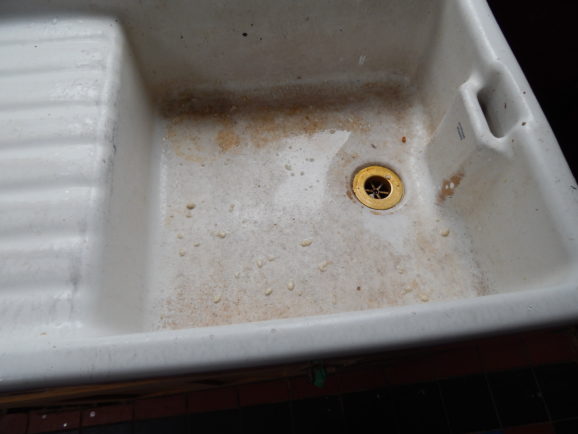
Here is the bowl of the sink in question showing the wear typical of a sink of this type and age.
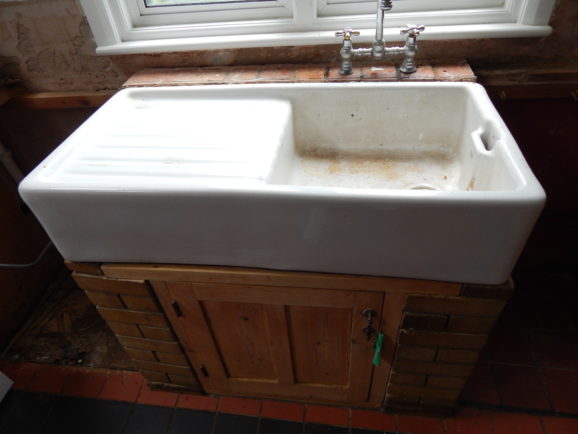
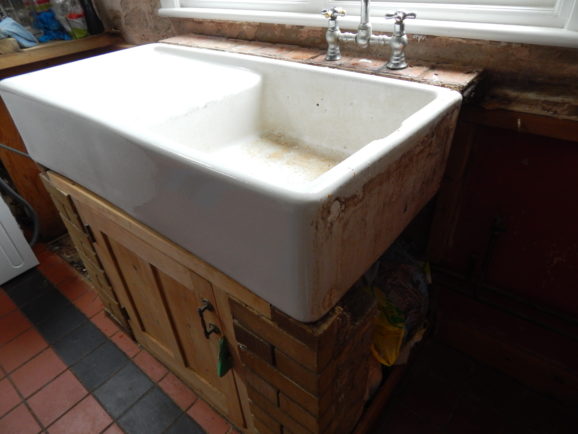
This picture shows one end of the sink and also what was unusual about this job.
When these sinks are made, one end never gets any porcelian glaze or enamel applied to it and also there are 4 circular holes just over an inch in diameter in this end of the sink, one on each corner. You can hopefully make out the two holes on the end of the sink closest to the camera.
The lack of glaze and the holes are part and parcel of the manufacturing process and generally it’s not a problem as this end of the sink is hidden from sight below the worktop.
However, it was a bit of an issue here with this sink what with it all being on display.
We filled and made good the holes on this end of the sink, as well as smoothed of the fireclay here as it was noticeably rougher than the rest of the sink which had been glazed.
Then we resurfaced the whole sink, including this end.
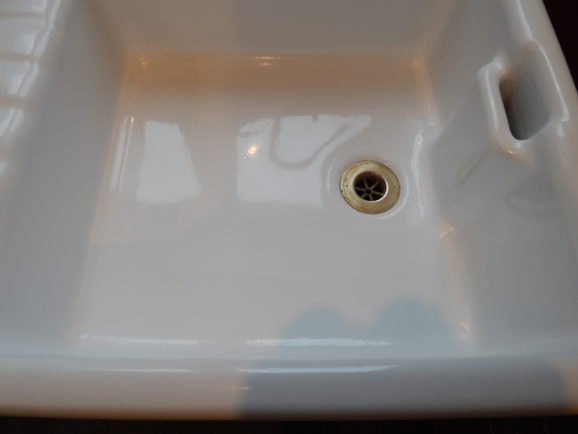
Here is the bowl of the sink. The bowl is now a uniform colour and the wear and staining has been dealt with.
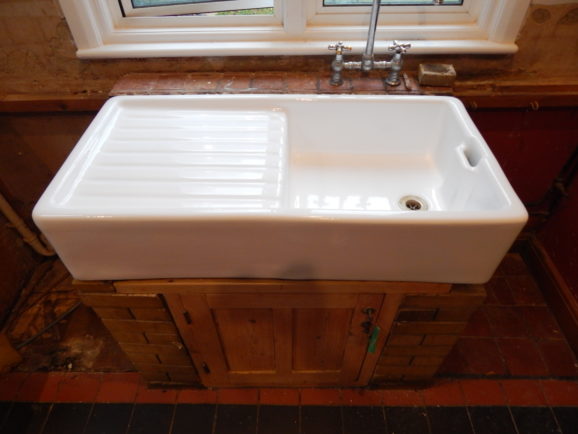
Here is the bowl of the sink. The bowl is now a uniform colour and the wear and staining has been dealt with.
Stained Cast Iron Bath & Soap Dishes Resurfaced
Stained cast iron bath with worn soap dishes circa 1930’s
This is a bath we restored in the Belmont Hill area of London. The bath, tiles and soap dishes were all original. The bath was a really good size and nice and deep.
The bath and one of the soap dishes however had had their enamel coating completely worn away back to the cast iron in places and the bath was also extensively stained and worn over most of its surface.
In the picture above you can see the staining which is over most of the bath. And around the waste you can black marks. This is where the enamel coating on the bath has been worn back to the cast iron below.
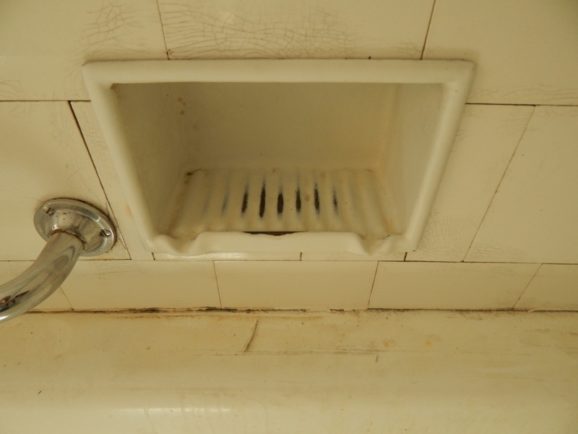
Worn Soap Dish
There were two soap dishes built into the wall above the bath. Like the bath itself, these were made of cast iron which was then enamelled. In the picture above you can see that the enamel on one of the dishes as been worn back to the cast iron through decades of use.
We were able to restore the bath and soap dishes in a day, and they were ready to use the next. You can find out more about our process here.
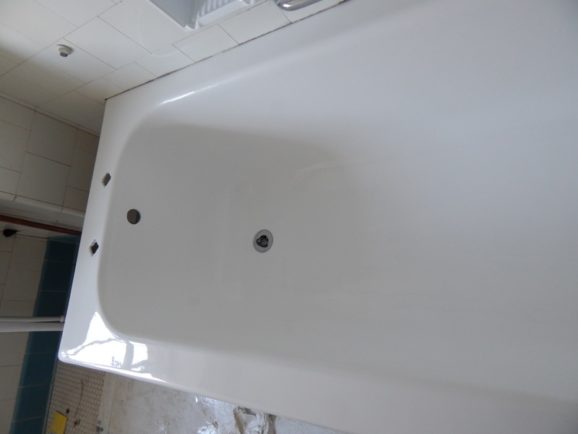
Here is the result of the bath being re enamelled.
The above picture shows the finished bath with the staining and wear issues all handled.
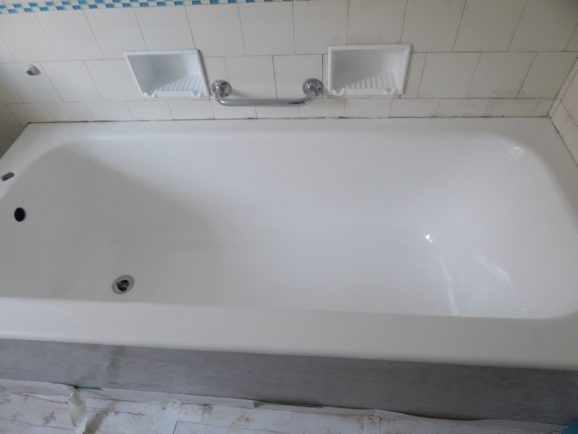
Lovely bath & Soap dishes after we resurfaced it.
And finally, here we have the bath and both the soap dishes after completion. What do you think?
French Jacob Delafon meets Melbourne Australia
Here is a fantastic double ended Jacob Delafon bath that we couriered to Melbourne, Australia. The feet are really exquisite. Every Delafon bath has the model number cast into it’s feet. This particular model is number 38. Here is the bath in it’s raw state.
As the bath is French and not typical in height or depth we had bespoke standpipes made in Silver Nickel so that the clients could deck mount a lovely set of antique bath-shower mixer taps. The mixer taps were also in Silver Nickel. All this was packaged up and sent to Melbourne.
The client had the interior re enamelled in a soft blue/white and simply brushed down the outside, whilst the feet were electro copper plated.
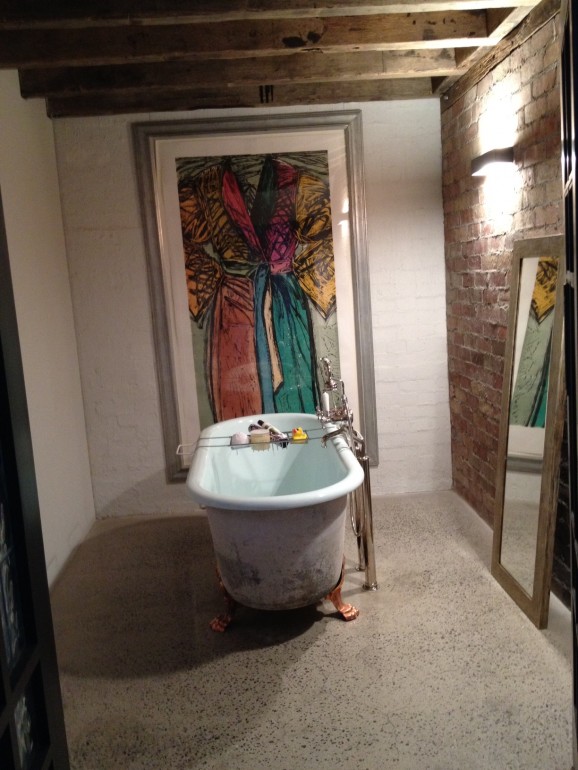
They have done a fantastic job with the whole room. We think it’s a beauty! What do you think?
JOHN BOLDING ANTIQUE BASINS RESTORED
We were asked to restore some old antique sinks in an old property. When we arrived we found a lovely old property having its original features, fixtures and fittings restored and renewed. As there were over a dozen bedrooms it was a relatively big undertaking.
The basins were part of the restoration work so we were called in as the restoration experts to restore them. We had to repair some cracked sinks. We did also restore some fantastic antique baths in this property.
The basins we were asked to restore were in the bedrooms. As an aside the bedroom vintage wallpaper looks fantastic! There were quite a few sinks that were cracked or completely broken. Repairing cracked sinks is a specialist job.
The fact that the basins had lasted so long was amazing. They were original John Bolding Basins from the first Bolding works. This dates the basins circa 1880-1890.
 John Bolding and Sons Ltd were great rivals of Thomas Crapper & Co ltd and in 1963 John Bolding and Sons ltd became the owners of Thomas Crapper and Co ltd. The basins by Bolding are quite distinctive and very aesthetic.
John Bolding and Sons Ltd were great rivals of Thomas Crapper & Co ltd and in 1963 John Bolding and Sons ltd became the owners of Thomas Crapper and Co ltd. The basins by Bolding are quite distinctive and very aesthetic.
Normally these particlar sinks would be beyond repair. However we have developed an innovative restoration process which we have been using for the last 18 months with great success. So now whereas architectural salvage company’s or private individuals were having to dispose of beautiful antique basins we can restore them. We think we are the only bath and sink restoration company that can fix sinks with cracks or damage such as this.
Once repaired we would normally resurface the sinks completely. They would look fantastic, feel fantastic and look virtually new. However the John Bolding Emblem/Logo would be lost. That was not an option in this situation. So we had to very carefully colour match and blend in our restoration work so that the sinks were renewed but the repairs were virtually invisible and the logo stayed intact. Thus preserving the heritage and integrity of the sinks. As you can see the results are fantastic. Restoration work like this is priceless. These basins could have ended up being thrown out with all the history and heritage lost with them. Now they can be admired and used for the next 100 years.
If you have some historic or antique basins, baths, bidet or toilets you would like to salvage and bring back to life contact: The Bath Business, The Bath and Basin restoration specialist. They can help you.
Bath Resurfacing, A Brief History
Bath Resurfacing, as a professional service, is a relatively new industry, dating back decades rather than centuries. The oldest company in the UK that is still resurfacing baths is in its 4th decade.



However, once bathrooms were pretty much ubiquitous, different industries and services came to be built up around them. One of these was Bath Resurfacing.
Bath Resurfacing itself is an off-shoot of the car refinishing trade. In fact, in America, the usual term used to describe the trade is “Bath Refinishing”; not “Bath Resurfacing” or “Bath Re-enamelling”, both of which are the terms mostly used in the UK. At The Bath Business we describe what we are doing as ‘Bath Resurfacing’ generally. We feel it best describes what is actually being done to your bath.
Although there are quite a lot of companies that do Bath Resurfacing professionally, and each of these may have their own system or materials they use, the one common denominator is that all of them spray on the new surface. And the techniques and methods used have been derived from the car refinishing trade. Bath resurfacing has been around long enough now that many who do it may never actually have sprayed a car (I’m one of them) but this doesn’t change where the industry itself sprang from. And fortunately as materials and techniques improve in the car industry, the benefits of this can be used when resurfacing a bath.
Many of the tools, equipment and techniques would be fairly familiar to anyone who has spayed cars, although there are some differences due to the fact of where you are working and what you are spraying.
Many of a car sprayers’ tools will be run by compressors. In other words, they are air driven. Not just his spray gun but other things such as polishers, sanders, etc are all air driven. But compressors are bulky, heavy items, even small ones; so for mobility purposes, most bath resurfacers will use electrical sanders and polishers.
Again, the primers used by a bath re surfacer will often be different as the surfaces he is spraying onto are not the same as a car sprayer. The Bath Business uses a primer or bonder that has been designed specifically to adhere the new surface to the enamel bath. Without this special bonder the new surface would not adhere, or if we did do something to make it adhere of the bath then chipped there would be a problem. Our special primer ensures that if you chip the bath at some point the surface is adhered so well that no water can then reach under the new surface.
The car industry is the major mover and shaker in the development of spray paints and systems. For example, in the mid 90’s BMW unveiled its development of a water-based, coloured base-coat with a clear lacquer sprayed over it. At the same time, other companies were spending a lot of money doing research and development of water-based systems for cars. A lot of bucks have been spent on this. And the result of all this is that today cars are sprayed with a water-based coloured coat with a clear lacquer on top.
These developments trickle down to the Bath Resurfacing industry.
The idea of putting a new surface onto a bath is, however, not a new one at all. In fact it probably pre-dates the cast iron enamelled bath itself.
The first enamelled cast-iron baths began to appear in the late 1800’s, around 1870 and 1880. (Interestingly, one of the figures credited with its development was David Dunbar Buick, who is much better known for going on to found the Buick Motor Company in 1903. The success of this company [although not run by Buick himself by this point] went on to fund the formation of General Motors.)

Prior to this the baths most people used were made of galvanized metal. The kind of thing you see in a western movie where the hero is soaking in a tub with his hat on, smoking a cigar. Once he’d finished, the water would be tipped out and the bath hung back on the wall.
These galvanized baths began to get painted on the inside. I came across one of these baths which had been installed into a bathroom. The old man who owned the property told me that when he was a child, the bath was painted once a year and he was the one sent to get the paint. I got the impression that there was a specific paint which was used. Very like the DIY kits you can get today, of which “Mr Tubby” is probably the best known. They can be covered in layers and layers of old paint. Stripping this off is definitely not a job for the faint hearted.
The Bath Business delivers a professional bath resurfacing service. We resurface bathroom suites, baths, sinks, toilets and shower trays. We also deliver a professional invisible chip repair service again to baths, sinks shower trays etc. So we don’t sell DIY kits. We do suply a chip repair kit to our past customers and we are looking at supplying our materials and system to other professional bath resurfacing companies.
When exactly painting galvanized baths started as a practice is something I’m not sure of, but is does seem to be the earliest example of Bath Resurfacing, and as I said, may even predate enamelled cast-iron baths.
Bath Resurfacing as a profession is, today, practised in many countries, but to say it is world wide would give a slightly wrong impression. It seems to be based mainly in those countries with a strong anglo-saxon culture or bent. America, Australia, Canada, etc. In a lot of countries, the idea of having a bath is somewhat odd and not really part of the culture. Hence, no Bath Resurfacing.
There are some gaps in what’s been written here, and if anyone has some information that I’ve not, I’d really like to hear from you. Some of the things I’d like to know are: Where did Bath |Resurfacing originate as a professional service? When? What were the first materials and equipment used?
I’d guess that the answers to these are that it was North America, probably after WW II and that Epoxy Resin was what was sprayed. But there are guesses. If you know more about this, please e-mail me at thebathbusiness@live.com and I can include it here in this article. Thank-you.
If you want to know more about the services we provide at The Bath Business then please look at our website, https://www.thebathbusiness.co.uk
We operate on London, Edinburgh, Surrey, Kent, Brighton, Manchester, Birmingham,Glasgow and throughout the UK.
Services include: bath re-enamelling, bath chip repairs, bathroom suite, enamelling, bathroom renovation, re-enamelling, resurfacing, re-surfacing a bath, enamel repairs, chipped enamel, cast iron bath sales, bathtub refinishing,bath tub resurfacing,
An Interesting climate change – Edinburgh to Melrose
04/03/09
I was in Edinburgh and travelled down to Melrose to resurface a bath. In Edinburgh it felt quite spring-like (as it should be) but as I travelled down you start to climb a bit and it eventually got quite wintery.
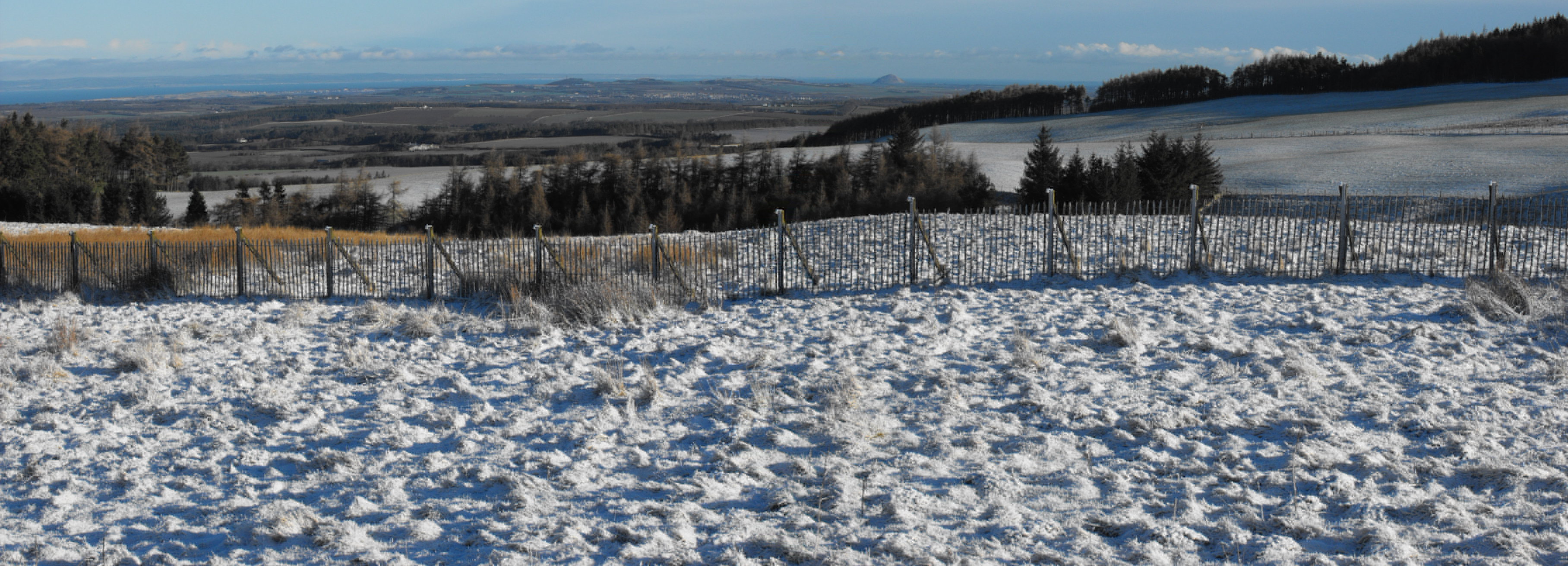
View from A68 looking down to the Firth of Forth.
Melrose itself is a very typical Scottish Borders town. Pretty but small. Lots of independent shops doing their own thing.A great place to visit and like most of the Borders town a very pretty place as well.
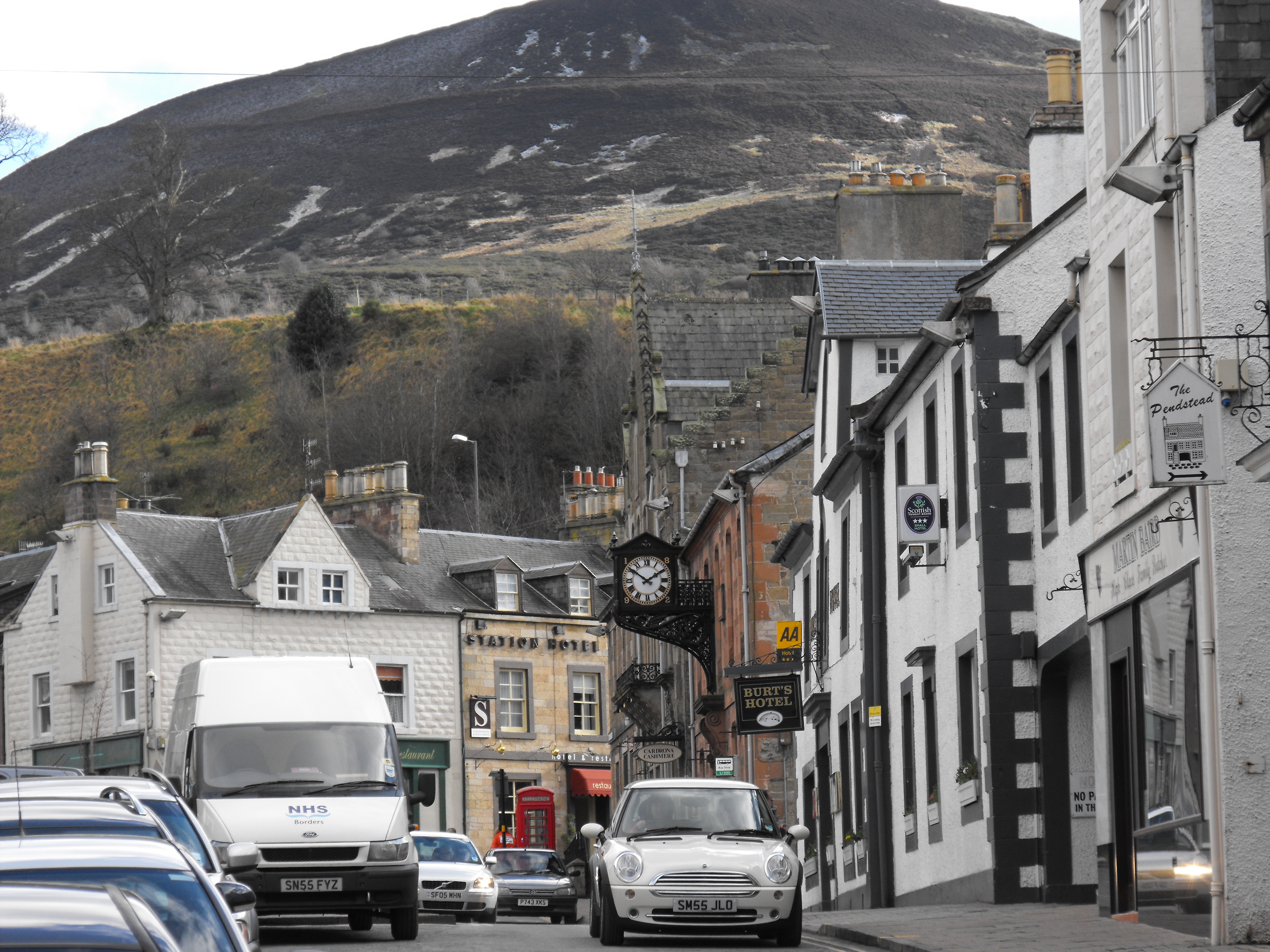
Melrose
The bath I was resurfacing was in a house that dated from the 1880’s, and the owners thought that the bath was original. It was a plunger bath and these are very old baths. It seemed very likely this bath was original to the house as there was a button above the bath that you could push to ring a bell for a servant. If the bath was original then it was one of the very first cast iron baths. It has the unusual feature of the plunger for the bath also acting as the overflow. You don’t see this in later baths.
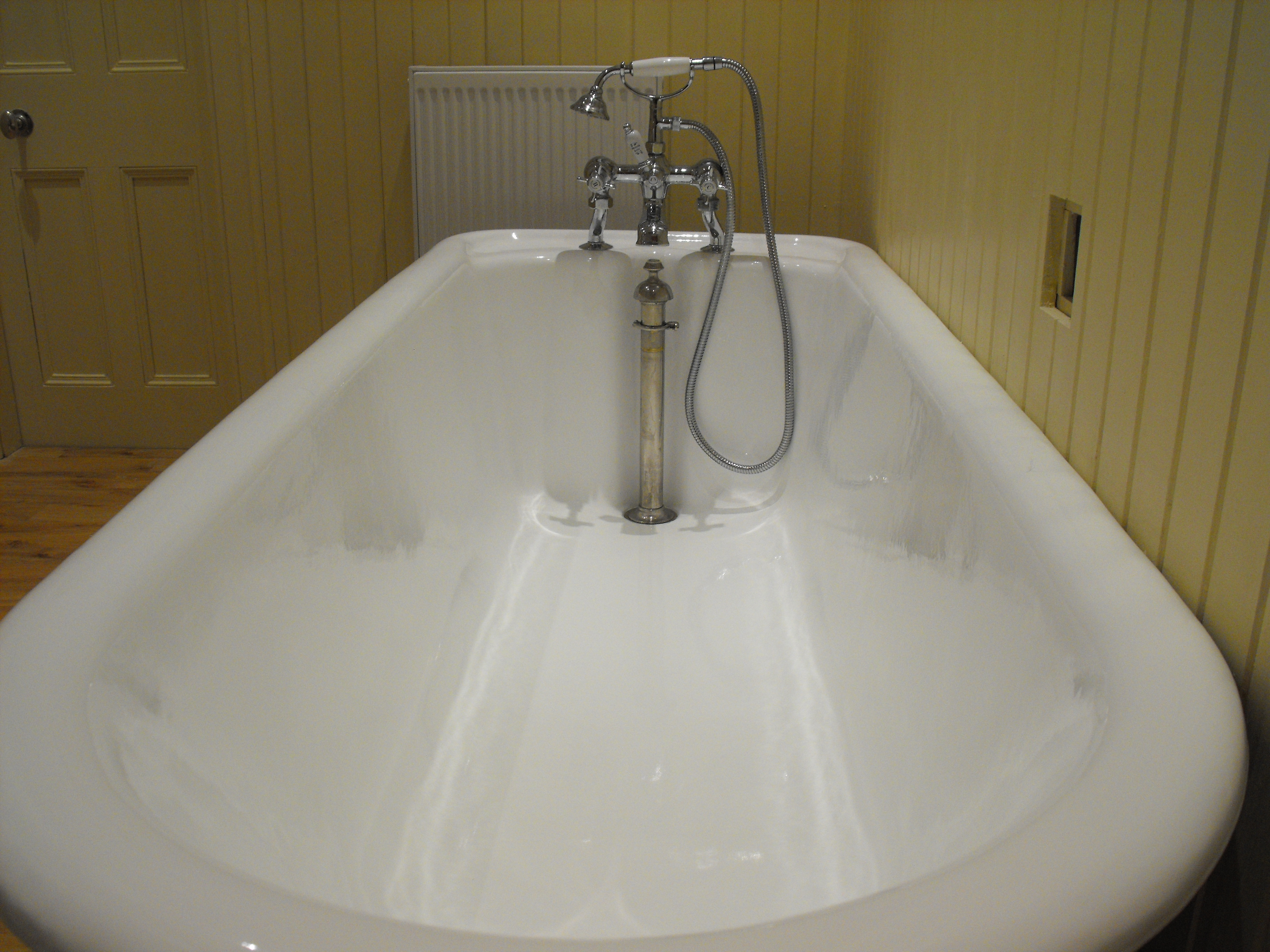
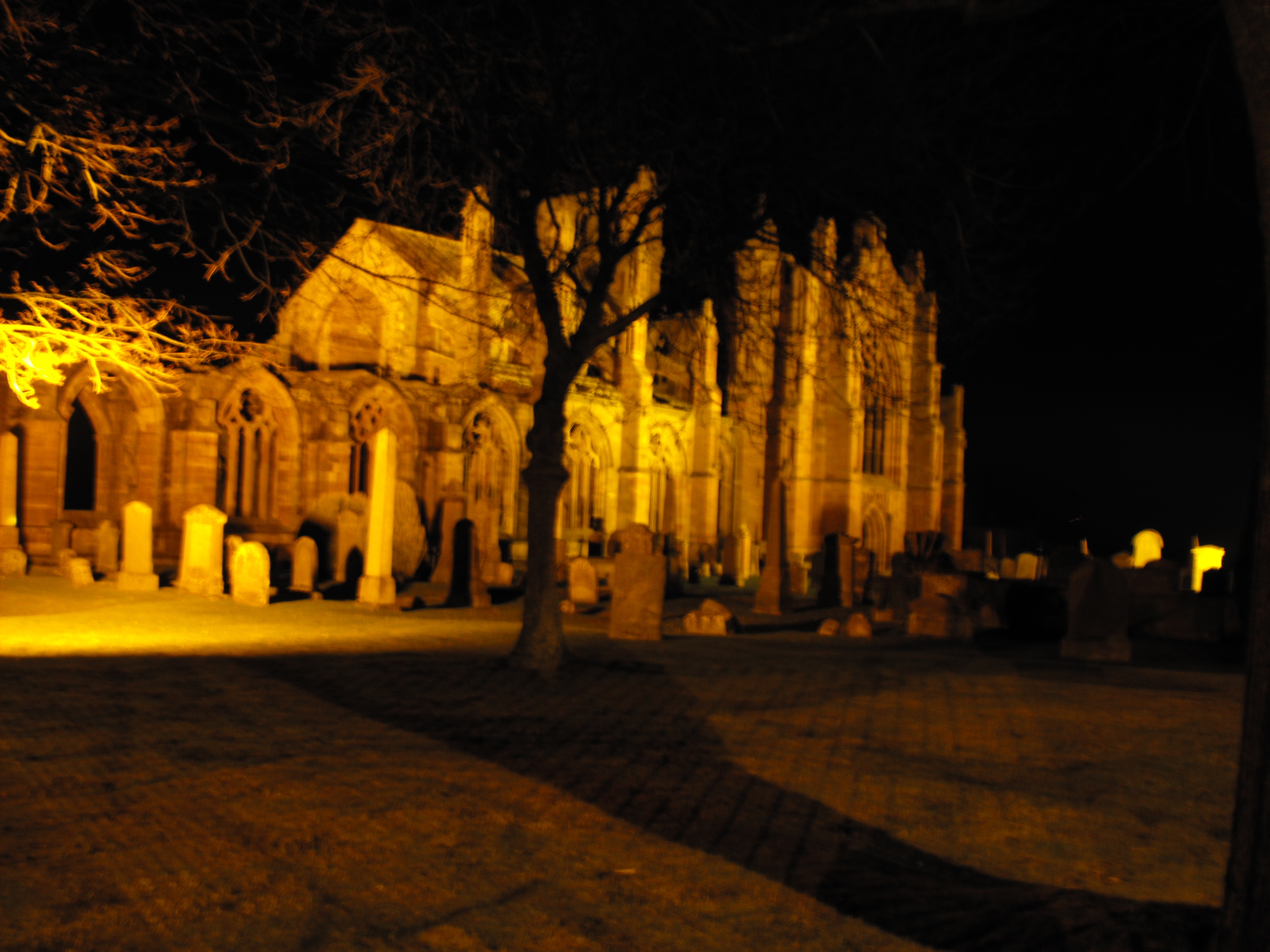
Melrose Abbey
Dedicated services in Scotland and England which include:bath re-enamelling, bath chip repairs, bathroom suite resurfacing, enamelling, bathroom renovation, re-enameling, resurfacing, bath re-surfacing, enamel repairs, chipped enamel, original cast iron bath sales, bathtub refinishing, and bath tub resurfacing.
Renovating your Bathroom
Renovating your Bathroom
Bath Renovations and restorations in London and Edinburgh

Above is a relatively small bathroom which has been very well designed to accommodate a very luxurious look.
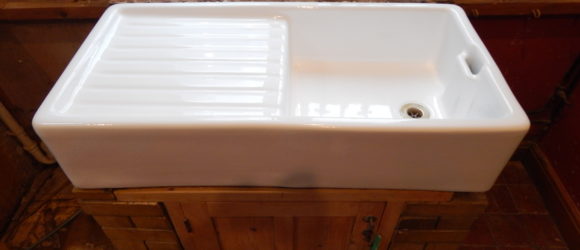
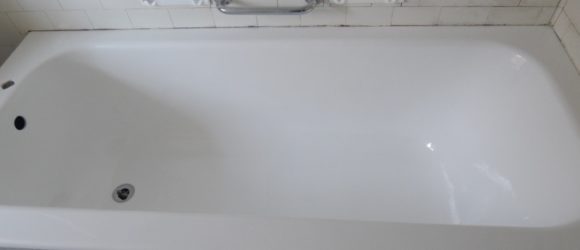
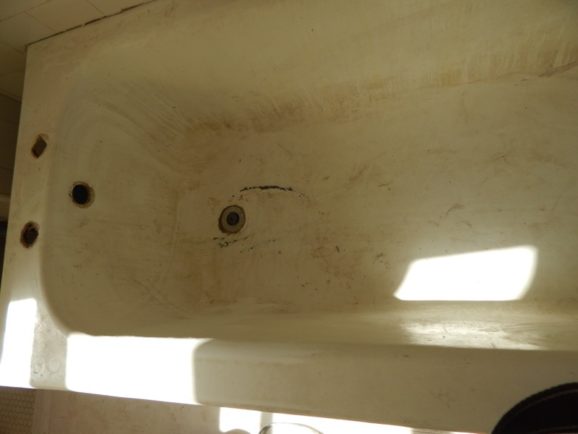
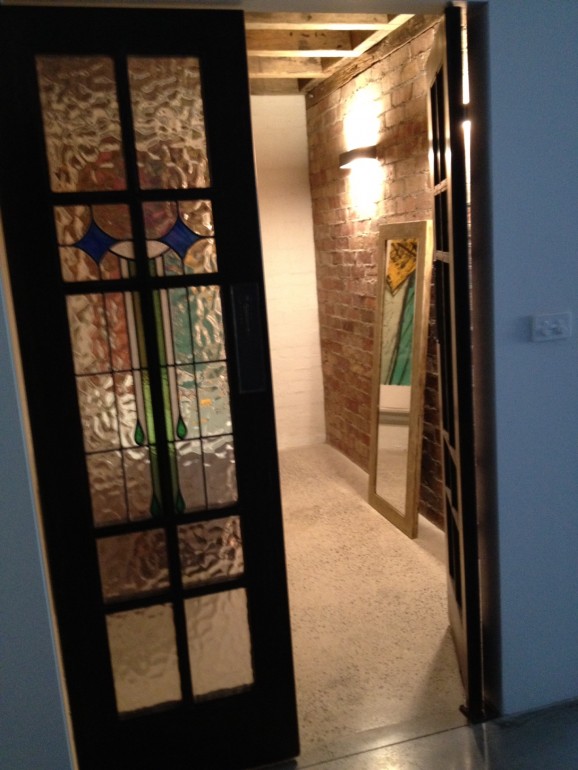
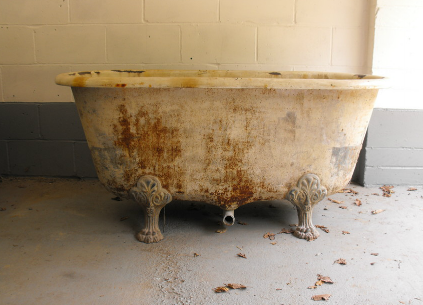
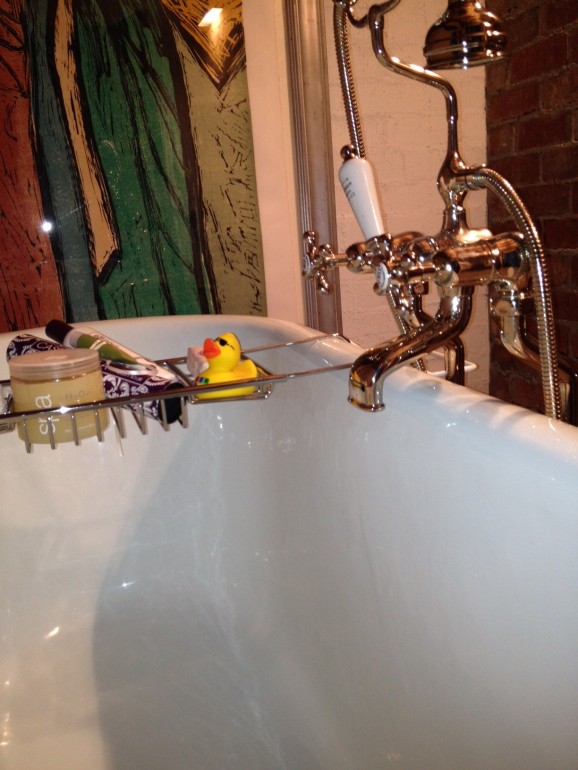








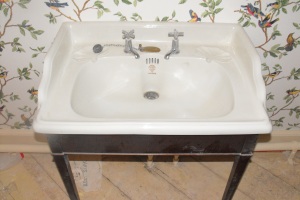

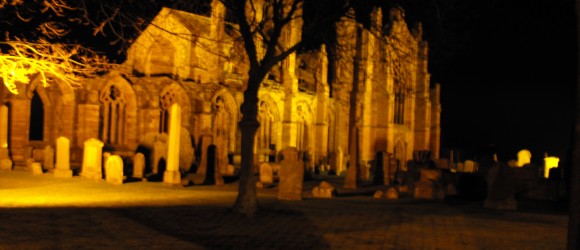

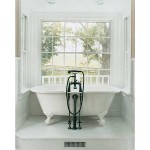
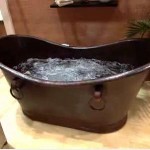
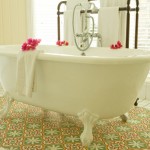







 Add us to your circle
Add us to your circle